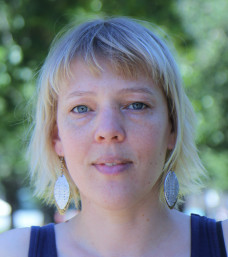Issue 71: Diabetes and dieting: Risk factors for eating disorders
Editor’s Note
Diabetes and eating disorders: Dr Beth Shelton
Dieting and children: Dr Laura Hart
Part 2: Video interview with Royal Children’s Hospital nurse Claire May
Upcoming events – ANZAED Autumn workshops
Editor’s Note
Welcome to a new year and a new start in 2021. COVID-19 continues to have an enormous impact on the world and the eating disorders field. At NEDC, our focus is on building the system of care towards effective, equitable and accessible treatment for all. This is even more important in the light of the increased need for services in the pandemic.
We are hard at work on several initiatives dedicated to our mission of developing and implementing a nationally consistent, evidence-based system of care for the prevention and treatment of eating disorders. Some of these projects include:
Primary Health Networks: NEDC is working with Primary Health Networks (PHNs) to improve their response to eating disorders using evidence-based tools and information. After successfully completing a pilot of an Eating Disorders Quality Improvement Tool for PHNs towards the end of 2020, NEDC is working towards finalising this tool and making it available to all PHNs.
First Nations: NEDC continues to learn from Aboriginal and Torres Strait Islander health professionals and people with lived experience of an eating disorder and is working collaboratively towards building a culturally safe and responsive system of care for eating disorders for First Nations people in Australia.
Credentialing: NEDC is partnering with ANZAED to develop and implement a credentialing system for eating disorder treatment providers. Developing the online platform has been a significant focus for the team. The single portal will support people living with an eating disorder and their families and carers to connect with a credentialed treatment provider, ensure clearer pathways for health providers wanting to make a referral to a treatment provider, and provide information and pathways for clinicians seeking the credential. Further updates will be provided via email to NEDC members, e-bulletins, and the NEDC website.
Professional Development: NEDC are developing accessible, nationally recognised and evidence-based professional development resources that will equip those in primary care to effectively identify and respond when a person is at risk of developing or experiencing an eating disorder. More details coming soon.
In this issue we present a recent ABC News report on diabetes and eating disorders with expert commentary from NEDC National Director Dr Beth Shelton. We have included information on risk factors and Type 1 epidemiology (incidence and prevalence) and further reading. Read it here.
We also talk to University of Melbourne researcher Dr Laura Hart, who expands on her contribution to the ABC News report on dieting and children here.
We conclude our two-part interview with Royal Children’s Hospital Melbourne Clinical Nurse Consultant Claire May, with the video component. Claire speaks here warmly and informatively about a "day in the life" of the adolescent eating disorders unit, the process of admission, discharge, meal support and what families and young people should know about inpatient treatment.
We also look at Professional Development Upcoming Events, including the ANZAED Autumn Workshops and more.
Diabetes and eating disorders: Dr Beth Shelton
NEDC National Director Dr Beth Shelton contributed to a moving report on young Wollongong woman Sienna Wiltshire and her struggle with diabetes and eating disorders, published by Sarah Moss on the ABC on January 14 here.
Sienna was diagnosed with Type 1 diabetes at the age of eight, and by 13 had developed an eating disorder. Now 26, she is in the final stage of kidney failure, and due to start dialysis.
The term “diabulimia” is often used informally to refer to the important link between diabetes and eating disorders but is not a medical/psychiatric eating disorder diagnosis and gives the false impression that the only eating disorder experienced by diabetics is bulimia nervosa.
Around one in 20 Australians has diabetes and around one in 25 Australians has an eating disorder. Dr Shelton said the link between diabetes and eating disorders was “well documented in research and it can be very high risk”.
“If you have diabetes you have a two-to-threefold risk of also experiencing an eating disorder,” Dr Shelton said. “Eating disorders are still misunderstood. They are mental illnesses with physical consequences.
“They’re not life choices, they’re actual illnesses that people encounter and that individuals can have increased genetic and biological risk for, and this is something that we are not fully aware of yet, in society.”
Sienna’s mother, Linda Wiltshire, and sister, Tawny, tried to get help for Sienna and recognition of her condition but say they were “fobbed off”.
Sienna has lived with different eating disorder diagnoses and body dysmorphia disorder, and the physical consequences of withholding insulin from her mid-teens until the age of 21. She has had two heart attacks – her first at 17 – and has numbness in her legs below her knees, peripheral neuropathy in her feet, amputated toes, gall bladder problems and kidney failure.
"I pretty much always knew that this was coming but I don't think I was really prepared for it to happen. I always thought I had more time," Sienna said.
In the ABC report, Dr Shelton said eating disorders need to be understood as mental illnesses with physical consequences and that lessening of stigma would help.
“The mental illness makes changes in the person’s brain and produces really distressing and painful thoughts and feelings and behaviours which are really hard to change without proper support and treatment,” she said.
See the ABC report here and the Facebook video here:
Please click on the plus sign in the orange box to see information on risk factors, incidence, prevalence and more.
Diabetes and Eating Disorders Facts
Relationship with EDs
Apart from insulin misuse, individuals with co-morbid eating disorders and T1 Diabetes Mellitus (DM) do not differ from individuals with eating disorders on other eating disorder-related behaviours and psychopathology (such as drive for thinness, body dissatisfaction, and perfectionism) (Custal et al., 2014).
Risk factors/Triggers
Factors associated with the development of eating disorders in people with diabetes have been found to include:
- Higher BMI in people with DM (Custal et al., 2014)
- Weight increase as a result of insulin treatment in people with Type 1 DM (Coleman & Caswell, 2020)
- A diabetes management approach which emphasises food and weight from the outset (Colton, Rodin, Bergenstal & Parkin, 2009)
- Concern over shape and weight (Lawrence et al., 2008)
- Difficulties coping with long-term condition (Philpot, 2013)
- Difficulty transitioning from parental management of diabetes in childhood to self-management in young people (Goebel-Fabbri, 2008)
- Increased rates of depression in people with diabetes (Olmsted, Colton, Daneman, Rydall & Rodin, 2008)
Epidemiology (incidence and prevalence)
Type 1
- Individuals with Type 1 DM are at increased risk of developing an ED (Custal et al., 2014; Jones, Lawson & Daneman et al., 2000; Peveler, 2000)
- Subthreshold eating disorders are also more common in people with Type 1 DM (Wisting, Frøisland, Skrivarhaug, Dahl-Jørgensen & Rø, 2013)
- 28% of adolescent girls and 9% of adolescent boys with Type 1 DM have disturbed eating (including both clinical and subclinical eating pathology) (Wisting et al., 2013)
- EDs affect about 20% of females with Type 1 DM and are twice as likely to occur in teenage girls with T1DM than in those without (Gagnon, Aimé & Belander, 2017; Philpot, 2013)
- Young women with type 1 diabetes have 2.4 times more risk of developing an eating disorder than age-matched women without diabetes (Jones et al., 2000)
Type 2
Information on EDs and Type 2 diabetes is scarce. Information on the association between Type 1 diabetes and EDs is more prevalent in the literature.
- Studies suggest that the most common eating disorder in people with type 2 diabetes is binge eating disorder (Winston, 2020)
Mortality
- The standardised mortality rate is significantly increased for patients with comorbid anorexia nervosa and type 1 diabetes (14.5) compared to anorexia nervosa (8.86) and type 1 diabetes (4.06) (Nielsen, 2002)
REFERENCES:
Coleman, S. E., & Caswell, N. (2020). Diabetes and eating disorders: an exploration of ‘Diabulimia’. BMC Psychology, 8(1), 1-7.
Colton, P., Rodin, G., Bergenstal, R., & Parkin, C. (2009). Eating disorders and diabetes: introduction and overview. Diabetes Spectrum, 22(3), 138-142.
Custal, N., Arcelus, J., Agüera, Z., Bove, F. I., Wales, J., Granero, R., ... & Fernandez-Aranda, F. (2014). Treatment outcome of patients with comorbid type 1 diabetes and eating disorders. BMC Psychiatry, 14(1), 1-5.
Gagnon, C., Aimé, A., & Bélanger, C. (2017). Predictors of comorbid eating disorders and diabetes in people with type 1 and type 2 diabetes. Canadian Journal of Diabetes, 41(1), 52-57.
Goebel-Fabbri, A. E. (2008). Diabetes and eating disorders. Journal of Diabetes Science and Technology, 2(3), 530-532.
Jones, J.M., Lawson, M.L., Daneman, D., Olmsted, M.P., & Rodin, G. (2000). Eating disorders in adolescent females with and without type 1 diabetes: Cross sectional study. BMJ, 320(7249), 1563–1566.
Lawrence, J. M., Liese, A. D., Liu, L., Dabelea, D., Anderson, A., Imperatore, G., & Bell, R. (2008). Weight-loss practices and weight-related issues among youth with type 1 or type 2 diabetes. Diabetes Care, 31(12), 2251-2257.
Nielsen, S., Emborg, C., & Mølbak, A. G. (2002). Mortality in concurrent type 1 diabetes and anorexia nervosa. Diabetes Care, 25(2), 309-312.
Olmsted, M. P., Colton, P. A., Daneman, D., Rydall, A. C., & Rodin, G. M. (2008). Prediction of the onset of disturbed eating behavior in adolescent girls with type 1 diabetes. Diabetes Care, 31(10), 1978-1982.
Peveler, R. C. (2000). Eating disorders and insulin-dependent diabetes. European Eating Disorders Review, 8(2), 164–169
Philpot, U. (2013). Eating disorders in young people with diabetes: Development, diagnosis and management. Journal of Diabetes Nursing, 17(6), 228-232.
Winston, A. P. (2020). Eating Disorders and Diabetes. Current Diabetes Reports, 20(8), 1-6.
Wisting, L., Frøisland, D. H., Skrivarhaug, T., Dahl-Jørgensen, K., & Rø, Ø. (2013). Disturbed eating behavior and omission of insulin in adolescents receiving intensified insulin treatment: a nationwide population-based study. Diabetes Care, 36(11), 3382-3387.
Further reading:
See our NEDC e-Bulletin Issue 62: Eating Disorders and Comorbid Diabetes, published 2019
National Institute for Health and Care Excellence (NICE) Guidelines on Eating Disorders: Recognition and Treatment: Physical and mental health comorbidities: Diabetes
Dieting and children: Dr Laura Hart
It has long been known that dieting can be a very dangerous practice and increases the risk of developing an eating disorder.
On 24 January, abc.net.au published the article Stop talking about your dieting in front of children, experts warn, as eating disorders rise. Reporter Jacqui Street noted that dietitians and clinicians were seeing increasing numbers of young people reaching out for help and highlighted the risks of discussing food elimination and exercise regimes with impressionable children.
Street quoted Dr Laura Hart, from the Centre for Mental Health at the University of Melbourne, as saying that COVID-19 lockdowns had been challenging for young people with disordered eating but that parents were not to blame and putting out positive messages could be protective. We asked Dr Hart to expand on her thoughts about dieting and eating disorders for our e-Bulletin.
Q&A
How did you become involved in the eating disorders field?
In 2007 I was working as a research assistant for the wonderful Professor Tony Jorm at the University of Melbourne on the development of guidelines for providing mental health first aid to Aboriginal and Torres Strait Islander people. Tony suggested I could also conduct a Delphi study to develop expert consensus guidelines on how to provide first aid to someone developing or experiencing an eating disorder. I liked this idea and started on the project in my “spare time”. I found it so fascinating and important that it turned into a PhD, and I have been working in the field of prevention and early intervention of eating disorders ever since.
The ABC article cited increased demand for support among several eating disorder organisations. What can be done to reverse these trends?
Clinicians have been reporting increases in the number of people accessing their services and the age of people needing supporting being younger. These trends require population-level prevention programs that promote body confidence, that end fat-shaming and that remove obesity prevention strategies that promote weight stigma.
We need prevention intervention at multiple points in our ecosystem – with parents who teach children their first words and relationships with food, with teachers who educate on the importance of nutrition, with health care professionals who guide our health choices, with social media influencers who have no qualifications but provide health advice for commercial reasons, with policy makers who allow big food companies to use predatory marketing and food production practices that negatively impact our health (no matter what size body we live in)… There is a lot that population health can do to help prevent disordered eating and the rise in clinical eating disorders, but we need funding and support to enact prevention policies and programs.
Australian adolescents engaging in dieting are five times more likely to develop an eating disorder than those who do not diet (Patton et al., 1999). What can be done to discourage a young person from beginning a diet?
Parents and teachers can have regular conversations about the difference between a healthful varied diet (which includes "sometimes foods" and the ability to enjoy and celebrate with food without it influencing how we feel about our self-worth) and dieting (which excludes foods based on energy or nutrient content).
We know that eating more fruits and vegetables is good for our mind and body. I would always encourage more fruit and vegetables for adolescents, and children and adults too! But I would not recommend cutting out whole food groups or limiting a diet to just “healthy” foods. This is not good for our mental health nor our bodies. We need fat, sugar and salt to survive, we just need to eat these in moderation. If parents and teachers can encourage intuitive eating, this is the best way to help children and adolescents develop the skills they need to choose what and when they should eat.
At what age should helpful messaging begin?
As soon as eating solids starts, so too should conversations about how food helps our body grow strong, fight sickness, heal wounds, help us learn and all the other amazing functions our body can do. When talking about the effect of food on the body, parents should not mention weight at all. We should encourage infants and pre-schoolers to appreciate and enjoy all kinds of foods because our body needs all kinds of colours, tastes and textures.
Read the ABC article here.
References:
Patton, G. C., Selzer, R., Coffey, C. C. J. B., Carlin, J. B., & Wolfe, R. (1999). Onset of adolescent eating disorders: population based cohort study over 3 years. BMJ, 318(7186), 765-768
Further reading:
NEDC Disordered Eating and Dieting fact sheet

Dr Laura Hart is a Senior Research Fellow in the Centre for Mental Health at the University of Melbourne. Her research focuses on developing and evaluating programs for the public to improve prevention, awareness and help-seeking for mental illness. She is the lead author and investigator of the teen Mental Health First Aid program, a training course for secondary students, and the Confident Body, Confident Child program to help parents prevent eating disorders and body image problems in their pre-schoolers.
Part 2: Video interview with Royal Children’s Hospital nurse Claire May
In this e-Bulletin, we present Part 2 of our interview with Royal Children’s Hospital Melbourne Clinical Nurse Consultant Claire May, which is the video component. You can read Part 1 in Issue 70.
Video items include:
- What is the process of admission to the adolescent eating disorders unit?
- What is the daily routine for a patient on the adolescent eating disorders unit?
- What is the process of discharge from the hospital?
- How does the unit educate nurses and families about meal therapy?
- What should families know about helping their child with an eating disorder?
- What should young people know about being admitted to hospital?
Further reading:
InsideOut Meal Support in the Hospital Setting training
Upcoming events – ANZAED Autumn workshops
State and national organisations continue to run professional development events but most can only be accessed online due to COVID-19. Next month marks the Virtual 2021 ANZAED Autumn Workshop Series (March 18-20), with the theme Diversity of Minds & Bodies. With eight interactive workshops addressing the topics of body image, gender identity and more over three days there will be plenty of stimulating discussion and time for reflection. There is also the option to take part live or watch later on demand.
Workshops:
- Body Dysmorphic Disorder & Eating Disorders (Dr Fran Beilharz and Dr Gemma Sharp);
- Working with Indigenous populations in a culturally sensitive manner (Professor Aunty Kerrie Doyle and Dr Paul Saunders);
- Body Image for Families/Adolescents (Dr Emma Spiel and Jess Ryan);
- ARFID & Adults (Dr Amy Talbot);
- Body Image across the spectrum of shape & size (Janet Lowndes and Fiona Sutherland);
- ARFID & Youth (Dr Claire Burton and Erica Allen);
- Eating disorders in Trans and Gender Diverse Children and Adolescents (Associate Professor Michelle Telfer, Dr Catherine Mollica and Martin Pradel), Diversity in Mind, Body & Gender (Amy Woods, Marie August and Naomi Rottem).
WA Eating Disorders Outreach and Consultation Service (WAEDOCS) has released their 2021 education calendar with options for telehealth or in-person attendance at a range of workshops and masterclasses for nurses, mental health nurses and dietitians. There is also an Enhanced Cognitive Behaviour Therapy for Eating Disorders (CBT-E) Workshop for Psychologists and other Mental Health Practitioners presented by Dr Anthea Fursland. All workshops are strictly limited in numbers.
Eating Disorders Victoria (EDV) has a series of Gippsland-based events on disordered eating and eating disorder prevention aimed at people involved in community or professional sport across all levels of competition and The Victorian Centre of Excellence in Eating Disorders (CEED) has a workshop on Cognitive Behaviour Therapy (CBT-E).
Find more Upcoming Events here.
« Back to Browse Resources





